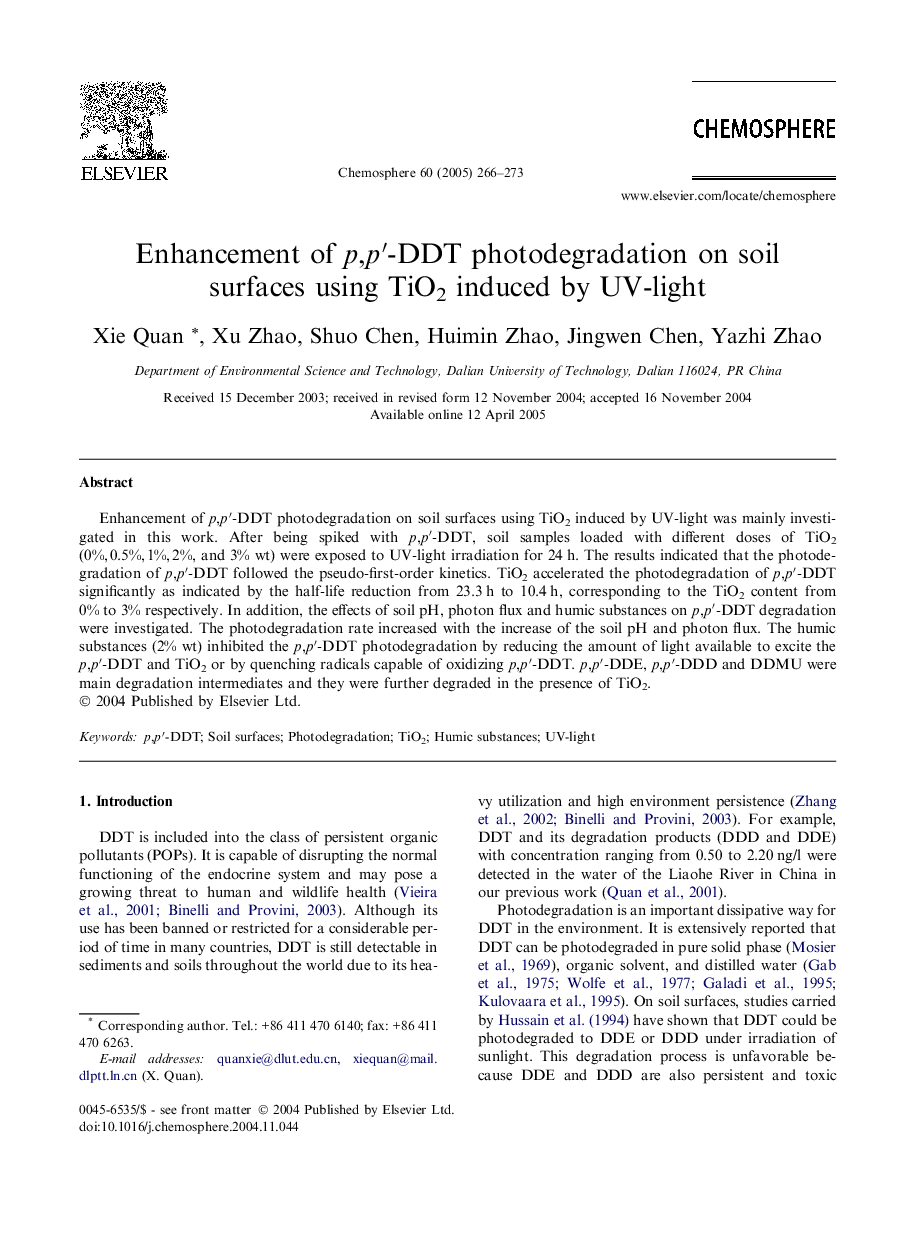| Article ID | Journal | Published Year | Pages | File Type |
|---|---|---|---|---|
| 9451795 | Chemosphere | 2005 | 8 Pages |
Abstract
Enhancement of p,pâ²-DDT photodegradation on soil surfaces using TiO2 induced by UV-light was mainly investigated in this work. After being spiked with p,pâ²-DDT, soil samples loaded with different doses of TiO2 (0%, 0.5%, 1%, 2%, and 3% wt) were exposed to UV-light irradiation for 24 h. The results indicated that the photodegradation of p,pâ²-DDT followed the pseudo-first-order kinetics. TiO2 accelerated the photodegradation of p,pâ²-DDT significantly as indicated by the half-life reduction from 23.3 h to 10.4 h, corresponding to the TiO2 content from 0% to 3% respectively. In addition, the effects of soil pH, photon flux and humic substances on p,pâ²-DDT degradation were investigated. The photodegradation rate increased with the increase of the soil pH and photon flux. The humic substances (2% wt) inhibited the p,pâ²-DDT photodegradation by reducing the amount of light available to excite the p,pâ²-DDT and TiO2 or by quenching radicals capable of oxidizing p,pâ²-DDT. p,pâ²-DDE, p,pâ²-DDD and DDMU were main degradation intermediates and they were further degraded in the presence of TiO2.
Related Topics
Life Sciences
Environmental Science
Environmental Chemistry
Authors
Xie Quan, Xu Zhao, Shuo Chen, Huimin Zhao, Jingwen Chen, Yazhi Zhao,
